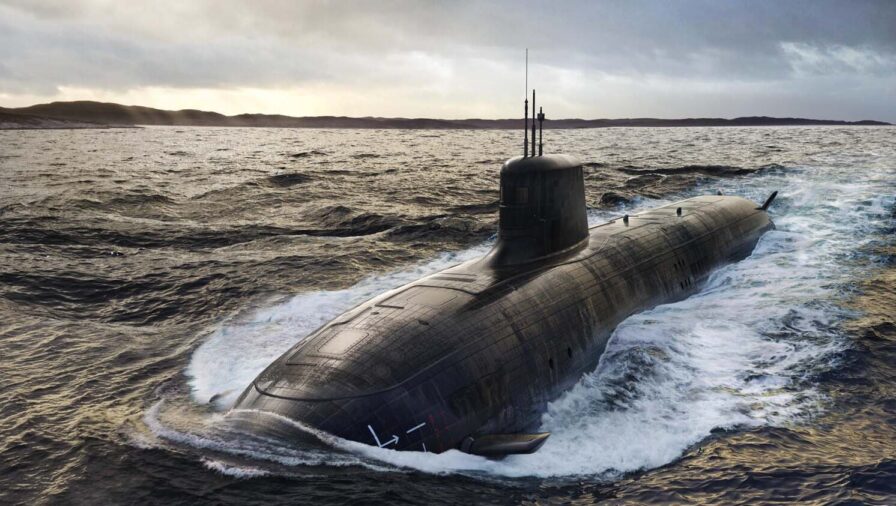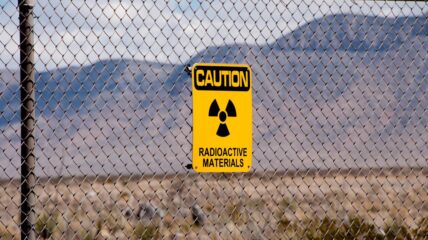The Australia-UK-U.S. (AUKUS) Security Agreement: A Q&A with Michael C. Horowitz

On Wednesday, June 11, news broke that the Trump administration was reviewing a trilateral agreement between the United States and two of its key allies—Australia and the United Kingdom. The agreement is popular with lawmakers on both sides of the aisle, so news that the Trump administration was revisiting key decisions in alliance came as a surprise to many. Perry World House Faculty Director Michael C. Horowitz, worked on the AUKUS agreement during his time at the Pentagon from 2022 to 2024. He participated in a Perry World House Q&A to answer some questions about the agreement, why it was created, and what the Trump administration may want to accomplish with this review and any possible withdrawal.
First and foremost—what is AUKUS? Why was it created?
AUKUS is a trilateral partnership between Australia, the United Kingdom, and the United States formed in 2021 to promote a free and open Indo-Pacific through cooperatively building key military capabilities and more deeply integrating the defense industrial bases of all three nations. Especially in the context of China’s growing military capabilities, AUKUS was created to bolster the ability of all three countries to work together to ensure the Indo-Pacific (and beyond) remains stable and prosperous. Australia’s acquisition of a conventionally-armed, nuclear-powered submarine capability will increase Australia’s ability to defend itself and to promote stability in cooperation with the United States and the United Kingdom. The three countries will also work together on new military capabilities that take advantage of economies of scale and industrial collaboration. The result should increase deterrence in the region, making aggression by countries such as China less likely, among other benefits.
The three governments often talk about AUKUS in the context of two “pillars.” Pillar I involves a pathway for Australia to acquire conventionally-armed, nuclear-powered submarines. U.S. and UK submarines are supposed to begin substantial rotations out of Australia beginning in the late 2020s, followed by the sale of U.S.-built Virginia-Class submarines to Australia in the 2030s and then the fielding of a new submarine called SSN-AUKUS, jointly built by Australia and the UK, and with the inclusion of key U.S. technology, in the 2040s.
Pillar II focuses on cooperation in advanced military technologies and integrating the defense industrial bases of all three countries. All three countries have substantially reduced the bureaucratic barriers for companies in the three countries to cooperate in developing new military capabilities, while ensuring those capabilities will not get diverted to dangerous actors such as China or Russia. The three nations have also launched innovation challenges to develop new technologies such as electronic warfare capabilities together, and fielded technologies to enhance their anti-submarine warfare capabilities.
The Trump administration has launched a review this security agreement—in particular a deal that the United States will sell up to five submarines to Australia within the next seven years. Why has the administration taken this step? And why do many think that it signals the potential for a U.S. withdrawal from AUKUS?
Each country now has a ruling party and government different from the governments that initially launched the AUKUS partnership in 2021, and each new government has launched a review of AUKUS to ensure it still makes sense in the context of their national defense and security strategies.
One concern about AUKUS Pillar I voiced by current Trump Administration officials such as Under Secretary of Defense for Policy Elbridge Colby, in particular, is the impact of selling Virginia-class submarines on the availability of submarines for the United States Navy itself. The United States submarine industrial base is not producing submarines fast enough, and maintenance operations to get existing submarines repaired and back in the water have been too slow. To address these issues, the Trump and then Biden administrations have made ever increasing investments—planned to reach the tens of billions of dollars in total—to enhance the U.S. submarine industrial base. Australia is also contributing billions to the U.S. submarine industrial base, independent of the purchase cost of the submarines and their own investments within Australia, so that the submarine industrial base can support both the sale of Virginia-class submarines to Australia and the needs of the U.S. Navy. Moreover, there are potential advantages to the United States from Australia having conventionally-armed, nuclear-powered submarines. It complicates China’s planning to have another country with those capabilities, enhancing deterrence in the region. Finally, since the sale of U.S. submarines to Australia is not planned to occur until the 2030s, it is not clear a decision is necessary today.
However, these concerns about the submarine industrial base are real and the Trump administration is reviewing these factors and more. Additionally, to the extent the Trump administration is more inclined to go it alone than prior U.S. administrations under the “America First” banner, initiatives like AUKUS might seem conceptually less attractive even if they are with two of America’s very closest allies.
What are the biggest concerns with any weakening of the alliance or even a full departure of the United States from AUKUS?
Withdrawing from AUKUS at this moment would raise questions about the commitment of the Trump administration to the Indo-Pacific, and especially to a strong defense posture that will deter China in the short-term and long-term. Secretary of Defense Hegseth’s remarks at Shangri-La in Singapore earlier in the month focused heavily on China’s military threat. However, withdrawing from AUKUS at this moment, before planned investments in the submarine industrial base have had time to have impact, would not just undermine U.S. relationships with Australia and the UK, it would be an admission of defeat about the defense industrial base and its trajectory over time.



